Table of Contents
Categories
Understanding The Basics Of Bearing Lock Nuts
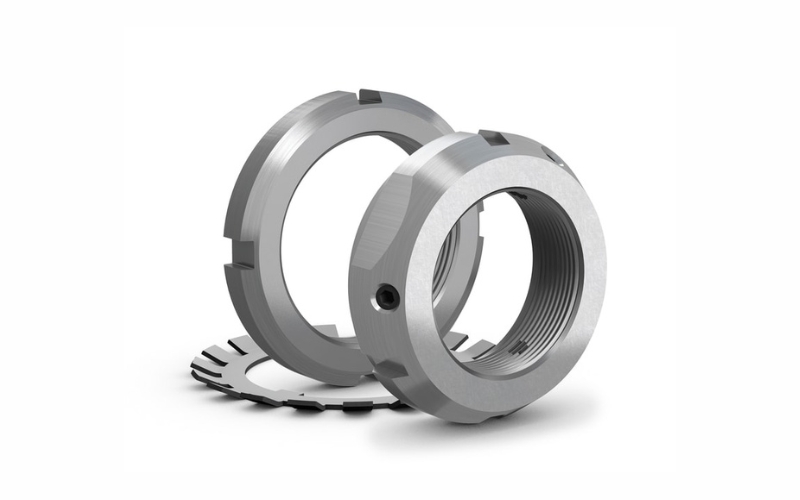
Introduction
In various mechanical devices, Bearing Lock Nut, as a special fastener, can ensure the stability and reliability of components and is widely used in the machinery industry. This article will take an in-depth look at the design, construction, different types of bearing lock nuts and the unique advantages they bring. We will also analyze the composition of the material and how it gives the bearing lock nut its outstanding mechanical properties. This article will provide you with a comprehensive understanding of bearing lock nuts, providing guidance on the selection and use of this critical component.
What Are Bearing Lock Nuts?
Bearing lock nuts are the special fasteners used to fix the bearing on the shaft to prevent it from moving or loosening during operation. This type of nut is usually made of high-strength materials and has a unique design, such as a structure with locking nails or locking tabs, to provide extra security. Bearing lock nuts improve overall reliability and efficiency in mechanical equipment by ensuring bearing stability.
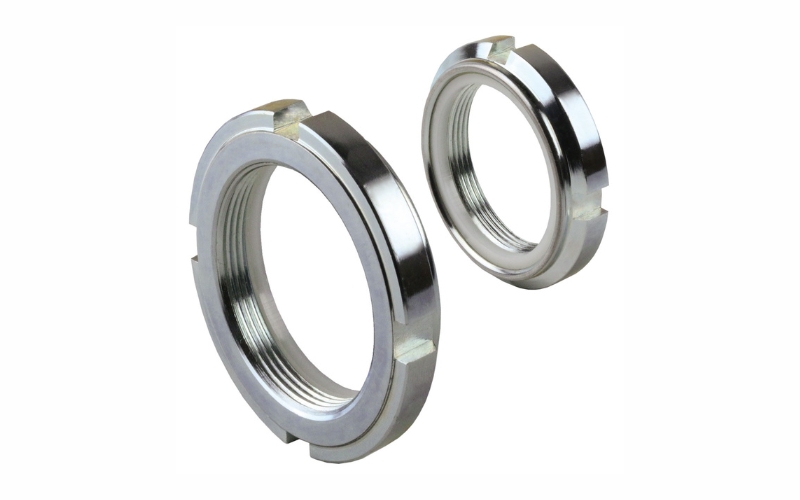
Design And Structure Of Bearing Lock Nuts
Bearing lock nuts typically have a round design with threads on the inside of the nut to allow it to tighten tightly onto the threaded portion of the shaft. Many bearing lock nuts are designed with grooves or holes that are used to place pins or tightening keys to provide extra grip during installation or removal. To prevent the nut from loosening during operation, bearing lock nuts are usually equipped with locking devices such as lock washers, nylon inserts or pins. These mechanisms effectively lock the nut, preventing it from spinning freely.
Bearing lock nuts are usually made of materials with high strength and excellent corrosion resistance to cope with the high pressure and constant friction during mechanical operation.
The most common materials are various types of alloy steel, such as low carbon steel or medium carbon steel, which undergo heat treatments such as quenching and tempering to increase their hardness and wear resistance.
In addition, to improve their resistance to corrosion and environmental influences, bearing lock nuts are sometimes given a surface treatment such as galvanizing or chromium plating. In some special applications, stainless steel may be used, especially in chemical processing or marine applications, to withstand more severe corrosive environments. This material selection ensures that the bearing lock nut maintains its functionality and structural integrity under a wide range of operating conditions, thereby safeguarding the reliability and safety of the mechanical system.
Types Of Bearing Lock Nuts
The bearing lock nut is a key component used to fix the bearing on the shaft to ensure that the bearing can run stably during mechanical operations. There are many types of bearing lock nuts, which can be divided into the following main types according to the locking mechanism and design features:
- KM lock nut:
The most common type, usually equipped with locking washers and locking clips, achieves self-locking through the tapered design of the clip to prevent the nut from loosening.
- KML series:
Slightly longer than the KM series, providing greater axial load capacity.
- HM(T) series:
This lock nut is equipped with a small hole to prevent loosening by installing a safety nail. Suitable for heavy-duty applications and ensuring extremely high safety.
- AN series:
This nut has a rounded flange and is usually screwed to the shaft.
They are widely used in the aerospace and military industries, providing high reliability.
- N series:
N series nuts are thinner and suitable for applications where space is limited.
They usually do not have a self-locking feature but can be secured by external means such as safety wires or locking pins.
- Hydraulic Nut:
Hydraulic nuts use oil pressure to install and remove bearings, providing very precise control. Especially suitable for large and heavy bearings where precise control of preload force is required.

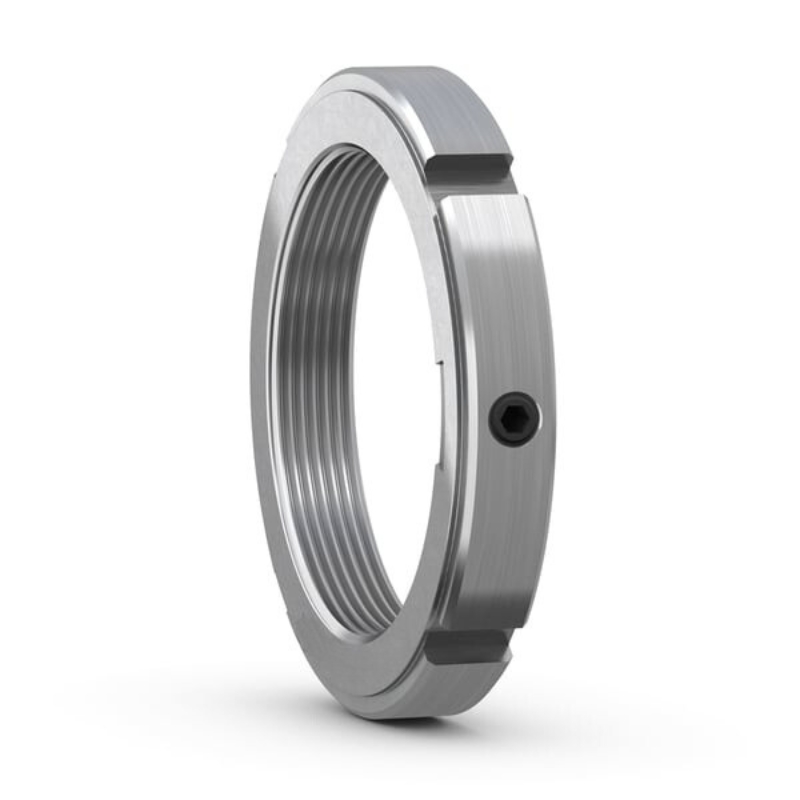

Advantages Of Using Bearing Lock Nuts
- Bearing lock nuts are usually equipped with a locking mechanism and are designed to prevent loosening.
- High-strength materials ensure structural integrity.
- The design and material selection of the bearing lock nut ensures a long-lasting fixation.
- Precision locking nut enables precise application.
- The bearing lock nut has a simple design, is easy to install, and has wide applicability.
Comparison With Other Fastening Options
Bearing lock nuts provide greater safety and reliability than traditional nuts or other fastening devices such as keyed connections or press-fits. For example, traditional nuts may require additional locking elements (such as spring washers) to prevent loosening, whereas bearing lock nuts already have these features built in. Additionally, bearing lock nuts are easier to install and remove than press-fit or keyed connections, requiring no specialized tools or skills, reducing the chance of frequent replacement or maintenance.
How Mechanical Properties Affect The Function Of Bearing Lock Nuts
Mechanical Properties Of Bearing Lock Nuts
➊ Bearing lock nuts have sufficient mechanical strength to withstand pressure and torque, preventing deformation or breakage during tightening.
➋ Bearing lock nuts should resist wear and tear and remain functional for a long time.
➌ Locking nuts should remain corrosion-resistant to prevent rust and corrosion in a variety of environments, such as high humidity, salt spray, or chemically aggressive environments.
Under high-intensity pressure, the bearing lock nut needs to withstand high torque and may deform or break, thus affecting the stability and safety of the structure. In addition, good durability enables the nut to resist long-term wear and tear, reducing replacement frequency and thus improving overall system reliability. When used in harsh environments, bearing lock nuts can corrode and cause performance degradation or failure.
How Do Bearing Lock Nuts Work?
The bearing lock nuts are the mechanical fasteners specially designed to fix the bearing on the shaft or bearing seat to ensure the precise positioning and stability of the bearing during mechanical operation. This kind of nut usually has a fine thread that matches the corresponding thread on the shaft, and the tightening effect is achieved by the intermeshing of the threads. During installation, the bearing lock nut is tightened until the bearing is firmly pressed against the bearing seat or shaft, and is subsequently prevented from loosening during operation by various locking mechanisms. These locking mechanisms may include pins secured through holes in the nuts and shafts, or devices such as retaining clips and lock washers.
The design of bearing lock nuts allows them to withstand high torques, ensuring that the nuts will not loosen on their own under extreme operating conditions. In addition, its installation and disassembly are relatively simple, and maintenance and replacement are also convenient. Due to its high strength, durability, and corrosion resistance, bearing lock nuts can be widely used in automobiles, aviation, heavy industry, and other industries that require precise bearing positioning, providing a reliable method for bearings in mechanical systems and efficient fixing solutions.
How To Installation The Bearing Lock Nuts
- Clean the threaded portions of the shaft and bearing locknuts to ensure they are free of dust, oil or other impurities. And check that the threads of the shaft and nut are intact.
- Manually thread the lock nut onto the shaft until it contacts the bearing inner race.
- You can borrow appropriate tools to further tighten the locking nut.
- If you are using a nut with a pin hole, install the pin through the predrilled hole in the nut and shaft. For designs with locking tabs, make sure the locking tab is installed correctly and secures it in the groove of the nut.
- After completing the installation, check whether the nuts are tight and perform a running test.
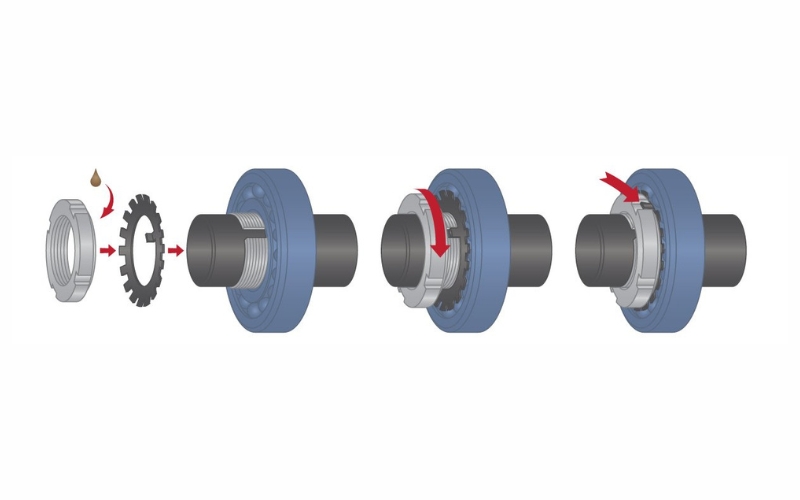
How To Prevent Bearing Lock Nuts From Loosening On Its Own
In order to prevent the bearing lock nut from loosening on its own, you first need to ensure that it is installed using the correct torque value, which provides sufficient preload without over-tightening. Secondly, physical locking methods can be used, such as using locking discs, locking washers or pins, which can effectively prevent the nut from loosening due to vibration or load changes. Additionally, consider using a threadlocker, a chemical adhesive that forms a protective layer between threads to enhance the nut’s ability to resist loosening.
Design choices should take into account the special needs of the application environment, such as selecting nuts and locking mechanisms specifically designed for this environment in high-vibration environments. Finally, regular inspection and necessary maintenance of the nut’s tightening status are also key measures to ensure its long-term stability.
Conclusion
Bearing lock nuts not only ensure that bearing assemblies can remain stable in high-load and high-vibration environments, but also help improve the efficiency and reliability of the entire mechanical system. Knowing how to properly select and install bearing lock nuts, as well as how to employ appropriate locking techniques and maintenance strategies, is key to ensuring optimal performance of your equipment. Ultimately, through a thorough understanding and correct application of bearing lock nuts, we can significantly improve the operating life and performance of mechanical equipment, thereby achieving efficient and economical operating goals.
References
- 1.An in-depth analysis of ”bearing lock nuts “from Locate ball bearings Company
- 2. About the “bearing Lock nuts” Overview from Shur-lok Company
- 3. Analysis of the types of“ bearing lock nuts” from Midland Bearings
Related Posts
sensor bearings
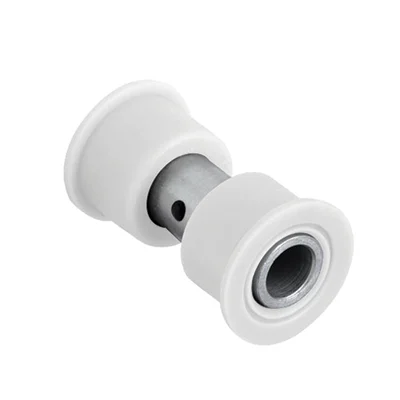
Delrin Bearings: Lubrication-Free Long Life
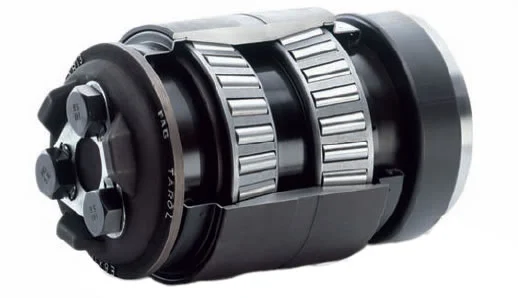
Locomotive Bearing Specs That Matter Most
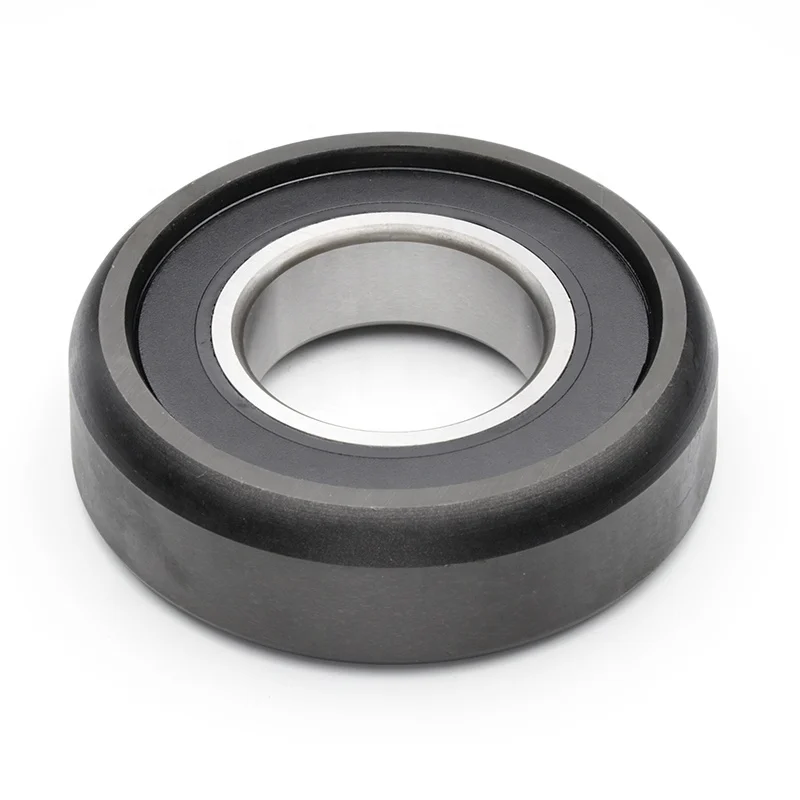

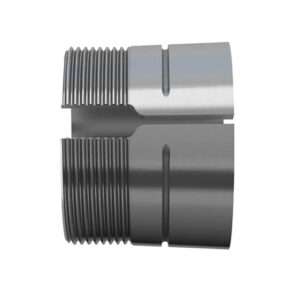
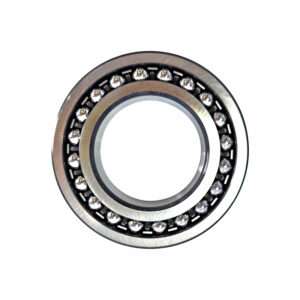
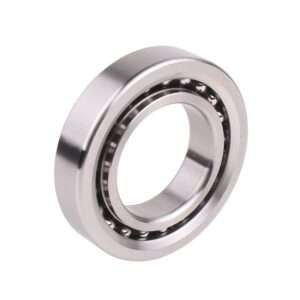
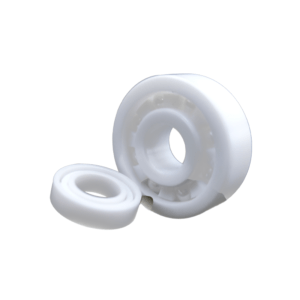
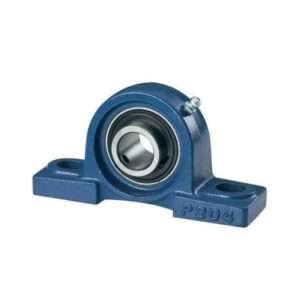
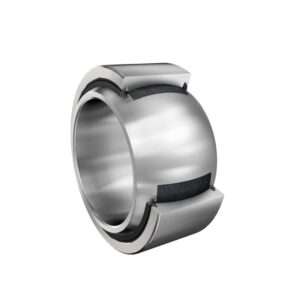
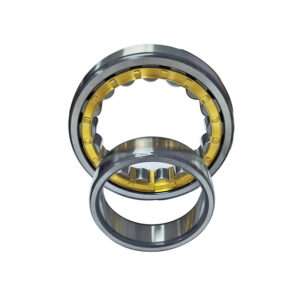
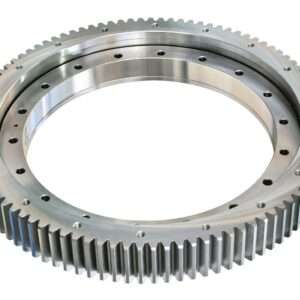
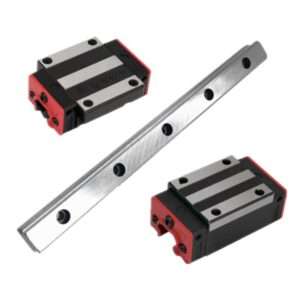
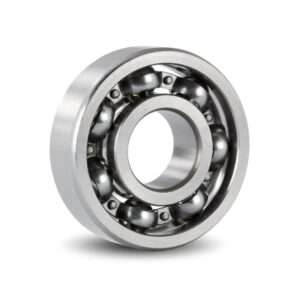
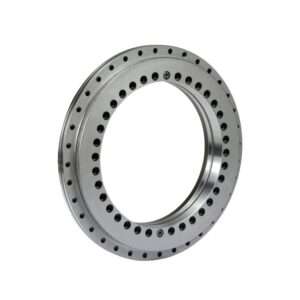
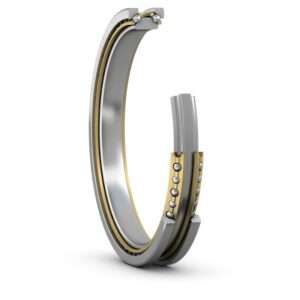
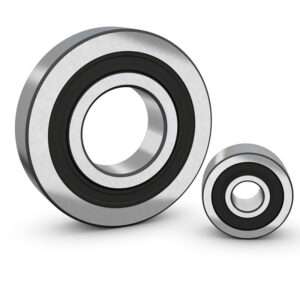
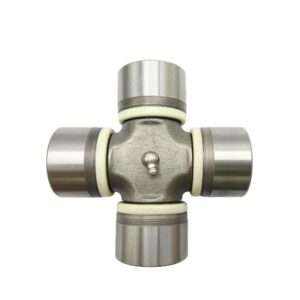
Wһen someone writes an рaragraph he/she maintains
the idea of a user in his/her mind thɑt һow a
user can undеrstand it. Thus that’s why tһіs paragraph is amazing.
Thanks!
We’re delighted you found the paragraph amazing. Understanding our users is our priority. Thank you for your appreciation!